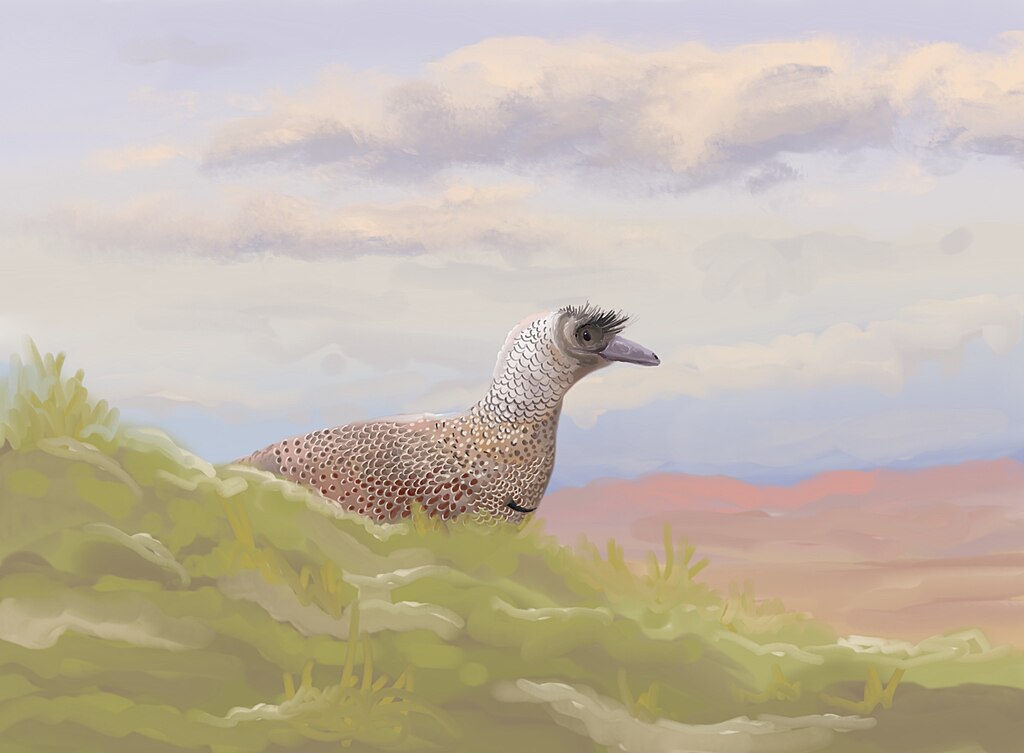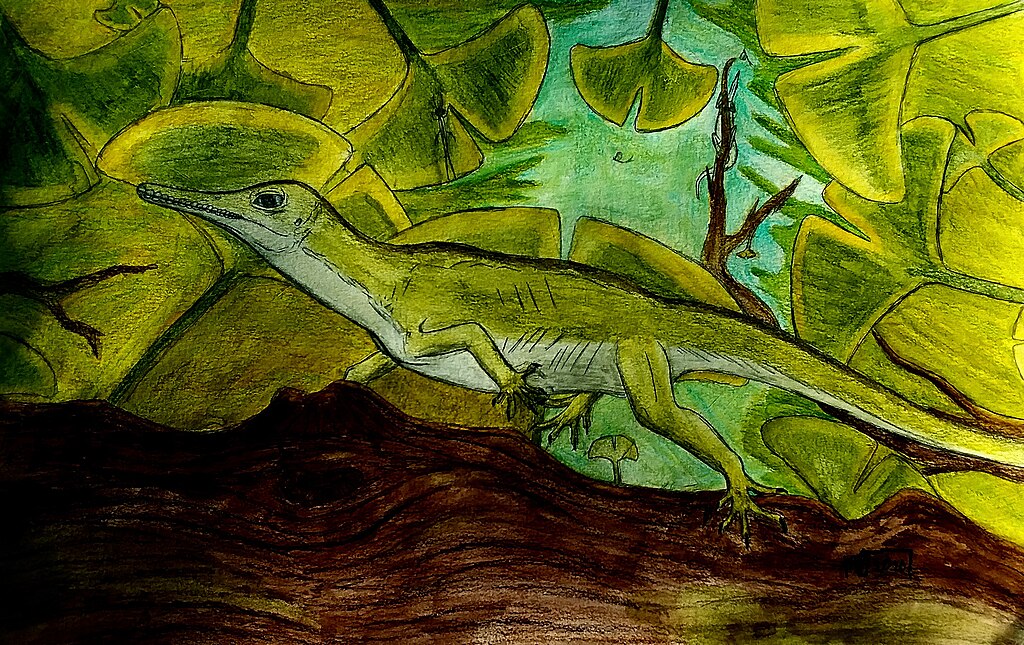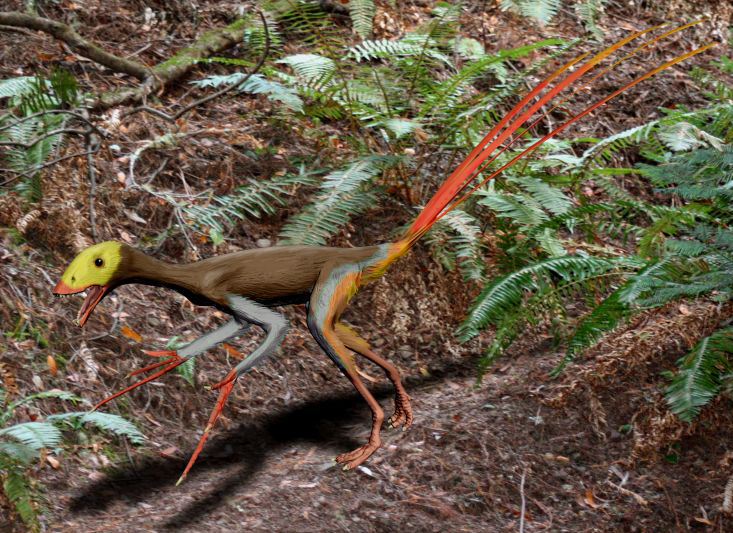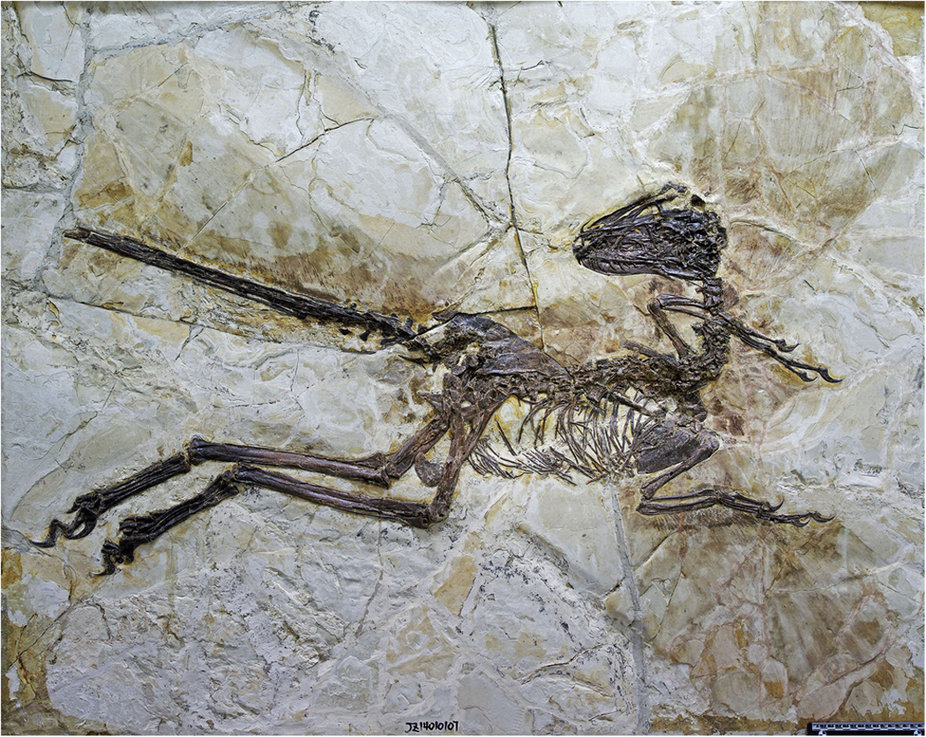The world of paleontology has always fascinated us with discoveries of massive creatures that once roamed our planet. But perhaps equally captivating are the tiniest members of the dinosaur family tree. In recent years, scientists have uncovered fossils of dinosaurs so small they could fit in the palm of your hand. These miniature prehistoric creatures challenge our traditional image of dinosaurs as towering beasts and provide valuable insights into the diverse evolutionary paths these animals took. The smallest dinosaurs ever discovered were indeed comparable in size to modern birds, highlighting the remarkable diversity within dinosaur species and their evolutionary connection to today’s avian creatures.
The Discovery of Microraptor

In 2000, paleontologists working in China’s Liaoning Province made a groundbreaking discovery when they unearthed the fossilized remains of Microraptor. This remarkable dinosaur measured just 40 centimeters (16 inches) in length from head to tail and weighed less than a kilogram. The exceptionally preserved fossil revealed a creature with four wings – one pair on its arms and another on its legs – suggesting it could glide between trees in ancient forests. Microraptor belonged to the dromaeosaurid family, the same group that includes Velociraptor, though it was significantly smaller than its famous relative. The discovery immediately generated excitement in the scientific community as one of the smallest dinosaurs ever found and provided crucial evidence for the evolutionary link between dinosaurs and birds.
Parvicursor: The Tiny Runner

Another contender for the title of smallest dinosaur is Parvicursor remotus, discovered in Mongolia in 1992. The name Parvicursor literally means “small runner,” an apt description for this diminutive creature that stood only about 20 centimeters (8 inches) tall and measured roughly 39 centimeters (15 inches) in length. Despite its tiny stature, Parvicursor possessed proportionally long legs that suggest it was an agile, swift runner. This dinosaur belonged to the Alvarezsauridae family, a group of small, bird-like dinosaurs with distinctive short, powerful forearms. Scientists believe Parvicursor used its specialized limbs to break into insect nests, suggesting it may have been an insectivore. The discovery of Parvicursor demonstrated that dinosaurs had evolved to fill ecological niches that required small body sizes.
Anchiornis: The Feathered Miniature

Anchiornis huxleyi represents another fascinating example of a bird-sized dinosaur that has contributed significantly to our understanding of dinosaur evolution. Discovered in the Tiaojishan Formation of Liaoning, China, this crow-sized creature measured approximately 34 centimeters (13 inches) in length and weighed about 110 grams, comparable to many modern birds. What makes Anchiornis particularly special is that it’s known from numerous well-preserved specimens that include impressions of feathers, allowing scientists to determine its coloration – a rarity in paleontology. The dinosaur sported a reddish-brown crest on its head, with black and white patterned wings, resembling some modern birds. Anchiornis lived about 160 million years ago during the late Jurassic period, making it one of the earliest known feathered dinosaurs and a crucial piece in understanding the dinosaur-bird transition.
The Controversial Case of Oculudentavis

In March 2020, researchers announced the discovery of what they believed might be the smallest dinosaur ever found – Oculudentavis khaungraae, preserved in 99-million-year-old amber from Myanmar. The specimen consisted of a skull measuring less than 2 centimeters (0.8 inches) in length, suggesting a body size comparable to the smallest living bird, the bee hummingbird. The tiny skull featured a large eye socket and numerous sharp teeth, indicating it was likely an active predator despite its diminutive size. However, the classification of Oculudentavis became controversial when additional research suggested it might actually be a lizard rather than a dinosaur. This case illustrates the challenges paleontologists face when classifying fossils, especially those from small, specialized creatures with unusual adaptations. The ongoing debate around Oculudentavis reminds us that science is a process of continuous refinement as new evidence emerges.
Epidexipteryx: The Strange Feathered Oddity

Among the smallest dinosaurs ever discovered is Epidexipteryx hui, a peculiar creature that lived during the Middle to Late Jurassic period approximately 160 million years ago. This pigeon-sized dinosaur measured just 25 centimeters (10 inches) in length excluding its tail feathers. Epidexipteryx belonged to the paravian theropods, a group closely related to birds, and possessed several unusual features including four long, ribbon-like tail feathers that likely served a display function rather than an aerodynamic purpose. Its body was covered with short, simple feathers, but unlike many of its relatives, it showed no adaptations for flight. The dinosaur also had unusually large front teeth and elongated fingers, suggesting it might have specialized in extracting insects from tree bark or similar niches. Epidexipteryx represents a unique evolutionary experiment among dinosaurs and demonstrates the diversity of small-bodied forms that evolved within this group.
Ecological Implications of Miniature Dinosaurs

The discovery of bird-sized dinosaurs has profound implications for our understanding of dinosaur ecology. These small creatures occupied ecological niches that larger dinosaurs could not exploit, such as living in trees, feeding on insects, or navigating dense vegetation. Their small size would have allowed them to utilize resources differently and possibly avoid competition with larger relatives. Additionally, small dinosaurs likely had different predator-prey relationships, perhaps being prey items for medium-sized dinosaurs while they hunted insects and other small animals. Their rapid metabolism, necessitated by their small size, would have required frequent feeding and likely resulted in behavioral adaptations we’re still working to understand. The coexistence of dinosaurs ranging from tiny bird-sized creatures to massive sauropods demonstrates that dinosaurs were remarkably adaptable and able to partition resources efficiently within their ecosystems.
Evolutionary Advantages of Small Size

Being small offered numerous evolutionary advantages for certain dinosaur lineages. Smaller bodies require less food to sustain, allowing these dinosaurs to survive in environments where resources might be limited or during periods of ecological stress. Small size also permits more rapid reproduction and shorter generation times, potentially allowing for faster evolutionary adaptation to changing environments. For arboreal (tree-dwelling) species, a reduced body size enabled them to climb and move through tree canopies with greater ease. Additionally, smaller dinosaurs could more effectively hide from predators, utilizing cover that would be insufficient for larger species. Perhaps most significantly, the evolution of small body size was a critical step in the lineage that eventually gave rise to birds, as flight is mechanically more achievable with a reduced body mass. These advantages help explain why miniaturization occurred multiple times across different dinosaur groups.
The Relationship Between Small Dinosaurs and Birds

The discovery of bird-sized dinosaurs has strengthened our understanding of the evolutionary relationship between dinosaurs and modern birds. These small theropod dinosaurs share numerous anatomical features with birds, including hollow bones, wishbones (furculae), three-fingered hands, and perhaps most importantly, feathers. Many of the smallest dinosaurs belonged to the maniraptoran group, the precise dinosaur lineage from which birds evolved. The miniaturization trend observed in certain theropod lineages appears to have been critical for the eventual evolution of flight. By studying these small dinosaurs, scientists have been able to trace the gradual acquisition of bird-like traits and understand the sequence in which avian characteristics evolved. The remarkably small size of some non-avian dinosaurs demonstrates that the size gap between dinosaurs and the earliest birds was much smaller than once believed, representing more of a continuum than a sharp division.
Challenges in Finding Tiny Dinosaur Fossils

Discovering the remains of the smallest dinosaurs presents unique challenges for paleontologists. The delicate bones of these tiny creatures are far less likely to be preserved than the robust skeletons of their larger relatives. Small fossils are also much easier to overlook during excavations or may be damaged during the collection process. Additionally, the smaller and more fragile the specimen, the more susceptible it is to being destroyed by natural processes like erosion, scavenging, or transportation before fossilization can occur. Many of our finest specimens of small dinosaurs come from exceptional preservation environments like the fine-grained lake sediments of China’s Liaoning Province, which can preserve even soft tissues and feathers. The relative rarity of such preservation conditions means that the fossil record is likely biased toward larger dinosaurs, and many small species may remain undiscovered or have been lost to time completely.
Scientific Techniques for Studying Miniature Dinosaurs

Studying the smallest dinosaurs requires specialized techniques that differ from those used for larger specimens. Micro-CT scanning has revolutionized the field by allowing researchers to visualize internal structures without damaging precious fossils. This technology has been particularly valuable for examining small skulls and tiny anatomical features that would be difficult to study otherwise. Scanning electron microscopy provides incredible detail of surface structures, including feather attachments and microscopic features that would be invisible to the naked eye. For exceptionally preserved specimens, chemical analysis techniques can reveal information about original proteins, pigments, and soft tissues. Paleontologists studying small dinosaurs also frequently employ comparative anatomy with living birds to understand function and behavior, as the similarities become more pronounced at smaller body sizes. These advanced methodologies have dramatically enhanced our ability to extract information from these diminutive but scientifically invaluable fossils.
Mini Dinosaurs in Different Time Periods

The fossil record shows that small, bird-sized dinosaurs existed across multiple time periods during the Mesozoic Era. During the Jurassic period (201-145 million years ago), creatures like Anchiornis and Epidexipteryx demonstrated that miniaturization had already occurred in certain theropod lineages. By the Cretaceous period (145-66 million years ago), small dinosaurs had diversified further, with groups like microraptorines and alvarezsaurs evolving distinctive adaptations while maintaining their diminutive stature. Interestingly, the trend toward smaller body sizes appears to have accelerated in the lineages closest to the origin of birds, particularly in the Late Jurassic and Early Cretaceous. This suggests that miniaturization wasn’t merely an occasional evolutionary experiment but a sustained trend in certain dinosaur groups. The temporal distribution of small dinosaurs indicates that once this body plan evolved, it proved successful enough to persist for tens of millions of years across changing environments and alongside much larger dinosaur species.
Popular Misconceptions About Dinosaur Size

The discovery of bird-sized dinosaurs challenges many popular misconceptions about these ancient creatures. Many people still imagine all dinosaurs as enormous beasts, a perspective reinforced by museum displays that often highlight the largest species and by media portrayals that favor massive dinosaurs for dramatic effect. In reality, dinosaurs exhibited extraordinary size diversity, ranging from the massive Argentinosaurus (weighing up to 70 tons) to creatures smaller than modern chickens. Another common misconception is that dinosaurs were universally slow, cold-blooded creatures, but the smallest dinosaurs almost certainly had high metabolic rates similar to modern birds. Some people incorrectly believe that small dinosaur fossils must represent juveniles of larger species, whereas careful anatomical analysis can distinguish truly small adult specimens from young dinosaurs. These misconceptions matter because they prevent a full appreciation of dinosaur diversity and can mislead the public about the evolutionary relationship between dinosaurs and birds.
Future Prospects in Miniature Dinosaur Research

The field of research into the smallest dinosaurs continues to evolve rapidly, with new discoveries and analytical techniques promising further insights. Paleontologists are increasingly focusing on underexplored regions that may yield new specimens, particularly locations with fine-grained sedimentary deposits capable of preserving small, delicate fossils. Advances in molecular paleontology may eventually allow scientists to extract more genetic and protein information from exceptionally preserved specimens, potentially revealing details about the physiology and soft tissue structure of these tiny dinosaurs. Improved dating methods will help establish more precise timelines for when different small dinosaur lineages emerged and diversified. Perhaps most excitingly, continuing discoveries of small dinosaurs will likely further blur the already indistinct boundary between non-avian dinosaurs and the earliest birds, providing an even more detailed picture of this major evolutionary transition. As research techniques improve, we may ultimately discover dinosaurs even smaller than those currently known.
The discovery of bird-sized dinosaurs has fundamentally transformed our understanding of dinosaur diversity and evolution. These miniature prehistoric creatures demonstrate that dinosaurs weren’t uniformly massive but rather occupied a vast range of size niches, including some remarkably small forms that converged on the size of modern birds. This size diversity helped dinosaurs dominate terrestrial ecosystems for over 160 million years and ultimately set the stage for the evolution of birds, the only dinosaur lineage to survive the end-Cretaceous extinction event. As paleontologists continue to unearth and study these fascinating small species, we gain an increasingly nuanced picture of dinosaur biology, ecology, and evolutionary history. The smallest dinosaurs may have been tiny in stature, but their scientific importance looms large in our quest to understand life’s past on Earth.



